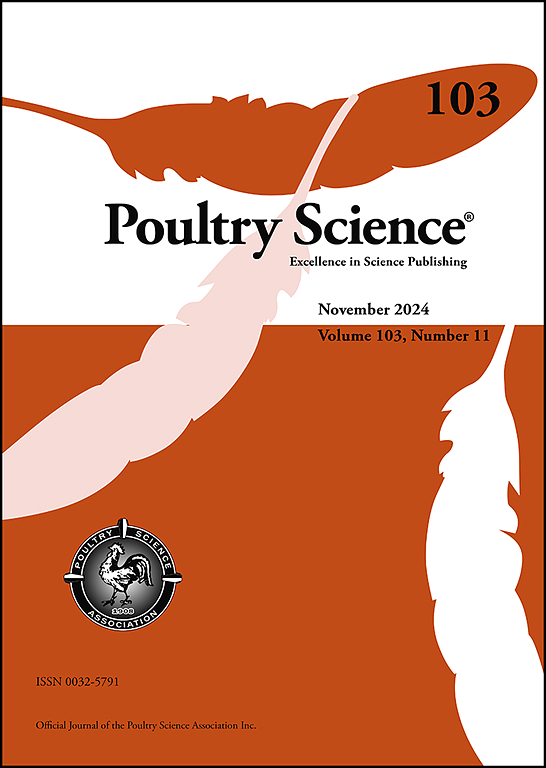Dihydromyricetin ameliorates lipopolysaccharide‒induced hepatic injury in chickens by activating the Nrf2/Keap1 pathway and regulating mitochondrial dynamics
IF 3.8
1区 农林科学
Q1 AGRICULTURE, DAIRY & ANIMAL SCIENCE
引用次数: 0
Abstract
Dihydromyricetin (DHM) is a flavonoid found in vine tea that exhibits various pharmacological characteristics, including antibacterial, antiapoptotic, and antioxidant effects. Our previous study revealed that DHM can alleviate chicken hepatic injury, but the underlying mechanism has not been elucidated. To further investigate the protective mechanism of DHM, this study firstly predicted by network pharmacology that the potential regulatory pathways of DHM on hepatic injury. Subsequently, the experimental models were replicated in vivo and in vitro using Hy‒Line white broiler chickens and chicken primary hepatocytes treated with DHM and with/ without LPS. Network pharmacology results showed that the effect of DHM on hepatic injury might be related to oxidative stress and mitochondrial function. Further experiments showed that DHM significantly reduced LPS‒elicited serum ALT and AST activities, promoted antioxidant enzyme activities and scavenged ROS in chicken liver or primary hepatocytes. Molecular docking studies showed that DHM could directly bind to Nrf2 and Keap1. Furthermore, DHM treatment regulated the expression of Nrf2 and Keap1, thereby upregulating the downstream expression of antioxidant factors, including HO‒1 and NQO1, in vivo and in vitro. Moreover, DHM modulated the expression of mitochondrial dynamics related factors, including Mfn1/2, Opa1, Drp1, and Fis1, meanwhile, DHM ameliorated mitochondrial structural damage and increased the MMP. Overall, these results suggested that DHM activated the Nrf2/Keap1 pathway and regulated the balance between mitochondrial fusion and fission, ultimately alleviating chicken hepatic injury induced by LPS.

二氢杨梅素通过激活Nrf2/Keap1通路和调节线粒体动力学改善脂多糖诱发的鸡肝损伤
本文章由计算机程序翻译,如有差异,请以英文原文为准。
求助全文
约1分钟内获得全文
求助全文
来源期刊

Poultry Science
农林科学-奶制品与动物科学
CiteScore
7.60
自引率
15.90%
发文量
0
审稿时长
94 days
期刊介绍:
First self-published in 1921, Poultry Science is an internationally renowned monthly journal, known as the authoritative source for a broad range of poultry information and high-caliber research. The journal plays a pivotal role in the dissemination of preeminent poultry-related knowledge across all disciplines. As of January 2020, Poultry Science will become an Open Access journal with no subscription charges, meaning authors who publish here can make their research immediately, permanently, and freely accessible worldwide while retaining copyright to their work. Papers submitted for publication after October 1, 2019 will be published as Open Access papers.
An international journal, Poultry Science publishes original papers, research notes, symposium papers, and reviews of basic science as applied to poultry. This authoritative source of poultry information is consistently ranked by ISI Impact Factor as one of the top 10 agriculture, dairy and animal science journals to deliver high-caliber research. Currently it is the highest-ranked (by Impact Factor and Eigenfactor) journal dedicated to publishing poultry research. Subject areas include breeding, genetics, education, production, management, environment, health, behavior, welfare, immunology, molecular biology, metabolism, nutrition, physiology, reproduction, processing, and products.
 求助内容:
求助内容: 应助结果提醒方式:
应助结果提醒方式:


